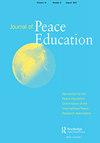The two faces of Janus: educational pathways into and out of violent extremism in Norway
IF 1.3
Q3 EDUCATION & EDUCATIONAL RESEARCH
引用次数: 0
Abstract
ABSTRACT The prevention of violent extremism in education has given rise to considerable policy debates in Norway. A key feature of this, illustrated in the growing stream of curricular and security policy reforms, is that these debates risk being disconnected from graspable elements in the social lives of young people. Using qualitative document analysis (QDA), this study analysis educational efforts to prevent violent extremism in Norway. The analysis suggests that interventions are structured according to reductionist thinking of cause and effect in which the individual is at the receiving end of security efforts. In particular, the dominant mode of preventing extremism is through therapeutic strategies aimed at helping vulnerable individuals becoming resilient to extreme ideologies and to help them respond to structural grievances. There is less attention on the role of social mechanisms including the reciprocal interplay between structural, social and individual factors in the analysed projects. Based on these findings, the study suggests the importance of exploring social processes in which extremism is engaged and resisted. Furthermore, it is argued that social movement theory (SMT) offers a promising way to understand the role of social processes in pathways into and out of extremism.Janus的两面性:挪威暴力极端主义的教育途径
摘要在挪威,预防教育中的暴力极端主义引发了相当多的政策辩论。日益增多的课程和安全政策改革表明了这一点,其中一个关键特征是,这些辩论有可能与年轻人社会生活中可吸收的元素脱节。本研究采用定性文献分析法(QDA),分析了挪威预防暴力极端主义的教育努力。分析表明,干预措施是根据因果还原论思维构建的,在这种思维中,个人是安全努力的接受者。特别是,预防极端主义的主要模式是通过治疗策略,旨在帮助弱势群体恢复对极端意识形态的抵抗力,并帮助他们应对结构性不满。在所分析的项目中,对社会机制的作用,包括结构、社会和个人因素之间的相互作用的关注较少。基于这些发现,该研究表明了探索极端主义参与和抵制的社会过程的重要性。此外,有人认为,社会运动理论(SMT)提供了一种很有前途的方法来理解社会过程在进出极端主义的道路上的作用。
本文章由计算机程序翻译,如有差异,请以英文原文为准。
求助全文
约1分钟内获得全文
求助全文

 求助内容:
求助内容: 应助结果提醒方式:
应助结果提醒方式:


